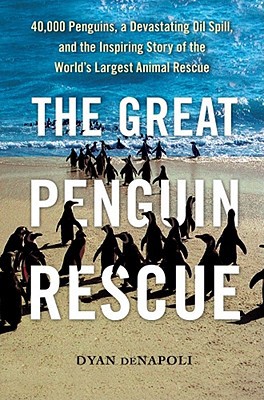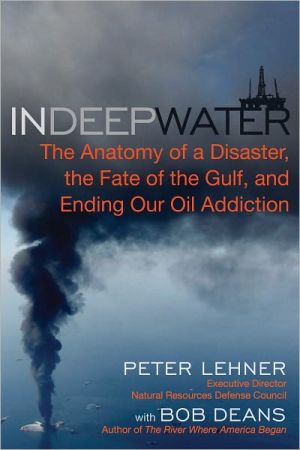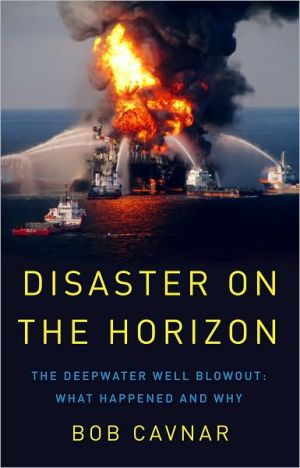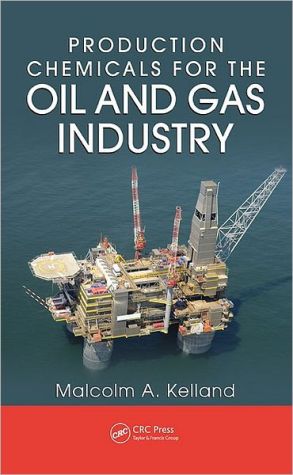The Great Penguin Rescue: 40,000 Penguins, a Devastating Oil Spill, and the Inspiring Story of the World's Largest Animal Rescue
ON JUNE 23, 2000, the iron-ore carrier MV Treasure, en route from Brazil to China, foundered off the coast of Cape Town, South Africa, spilling 1,300 tons of oil into the ocean and contaminating the habitat of 75,000 penguins. Realizing thJuneat 41 percent of the world’s population of African penguins could perish, local conservation officials immediately launched a massive rescue operation, and 12,500 volunteers from around the globe rushed to South Africa in hopes of saving the imperiled...
Search in google:
On June 23, 2000, the iron-ore carrier MV Treasure, en route from Brazil to China, foundered off the coast of Cape Town, South Africa, spilling 1,300 tons of oil into the ocean and contaminating the habitat of 75,000 penguins. Realizing thJuneat 41 percent of the world s population of African penguins could perish, local conservation officials immediately launched a massive rescue operation, and 12,500 volunteers from around the globe rushed to South Africa in hopes of saving the imperiled birds.Serving as a rehabilitation manager during the initial phase of the three-month rescue effort, Dyan deNapoli—better known as "the Penguin Lady" for her extensive work with penguins—and fellow volunteers de-oiled, nursed back to health, and released into the wild nearly all of the affected birds. Now, at the tenth anniversary of the disaster, deNapoli recounts this extraordinary true story of the world s largest and most successful wildlife rescue. When she first entered the enormous warehouse housing most of the 19,000 oiled penguins, the birds total silence told deNapoli all she needed to know about the extent of their trauma. African penguins are very vocal by nature, prone to extended fits of raucous, competitive braying during territorial displays and pair-bonding rituals, but these poor creatures now stood silently, shoulder to shoulder, in a state of shock. DeNapoli vividly details the harrowing rescue process and the heartbreaking scenarios she came up against alongside thousands of volunteers: unforgettable images of them laboriously scrubbing the oil from every penguin feather and force-feeding each individually; the excruciatingly painful penguin bites every volunteer received; and the wrenching decisions about birds too ill to survive. She draws readers headfirst into the exhausting physical and emotional experience and brings to life the cast of remarkable characters—from Big Mike, a compassionate Jiu-Jitsu champion with a booming voice, who worked every day of the rescue effort; to a man named Welcome, aka "the Penguin Whisperer," who had the amazing ability to calm any penguin he held in his arms; to Louis, a seventeen-year-old medical student who created a new formula for the highly effective degreaser used by the rescue mission—whose historic and heroic efforts saved the birds from near extinction. The extraordinary international collaboration of scientists, zookeepers, animal rescue groups, and thousands of concerned individuals helped save the African penguins—recently declared an endangered species—from an all-too-common man-made disaster. DeNapoli s heartwarming and riveting story is not just a portrait of these captivating birds, nor is it merely a cautionary tale about the environment. It is also an inspirational chronicle of how following one's passion can lead to unexpected, rewarding adventures—nd illustrates not only how people from around the world can unite for a greater purpose, but how they can be extraordinarily successful when doing so. The Great Penguin Rescue will inspire readers to believe they can make a difference Library Journal In June 2000, deNapoli was a New England Aquarium penguin specialist when an oil tanker sinking off the African coast triggered a massive spill threatening the local colony of 75,000 African penguins—representing 40 percent of this vulnerable species' global population. She and other penguin researchers rushed to Cape Town to assist in the rescue and rehabilitation of nearly 20,000 oiled birds and several thousand abandoned penguin chicks. She describes her rehabilitation-supervisor experience, detailing both the intense physical and emotional strain and the inspiration of working alongside thousands of volunteers toward a single goal. VERDICT While deNapoli's story is enjoyable and the rescue project has a happy outcome, the book is uneven; several compelling sections are disappointingly brief, while other portions are repetitive and overlong. This is a quick read that will generate interest with its timely topic and engaging animal heroes, although many may find themselves skimming.—Kelsy Peterson, Prairie Village, KS
PROLOGUE:\ Black Waters—Panic at Sea\ \ The question is not, “Can they reason?” nor, “Can they talk?” but rather, “Can they suffer?”\ —JEREMY BENTHAM, EIGHTEENTH-CENTURY PHILOSOPHER\ \ There they were. The scales on the sardines flashed and shimmered as they reflected the sunlight streaming through the water. After feeding their ravenous chicks for two straight days, and having swum several miles to reach the foraging grounds, the penguins were ready to eat. While they usually went out to sea in small groups, once they located a school of fish, every penguin had to isolate and capture their own prey. Each bird was now on its own. One of the penguins took a deep breath and dove beneath the sparkling surface of the ocean, swimming until it was below the schooling fish. The penguin hovered there, its black back blending in with the dark ocean floor, helping to conceal it from the sardines above. Then, in a sudden burst of speed, it shot up through the swirling mass, grasped a silvery fish behind its gills, and, while still underwater, swallowed it headfirst and whole. A swift and agile hunter, the penguin caught and swallowed several more fish before its aching lungs signaled the need to come up for air. After being underwater for several minutes, it surfaced far from where it had originally submerged.\ Only now, the penguin found itself in the midst of a thick and noxious substance that clung to its feathers and slowed it down as it swam. The caustic oil got into the bird’s eyes, burning them and making it hard to see. Confused and anxious, the penguin struggled to make its way through the viscous black stuff floating on the surface of the ocean. The heavy oil coating its body weighed it down, making it hard to keep its head above water. The penguin frantically pumped its wings, but it was becoming increasingly difficult to move. With every breath, it inhaled some water, along with the traces of oil coating its beak. Choking on the toxic mix burning its lungs and throat, the penguin coughed and struggled to breathe.\ The sticky oil had caused the penguin’s dense, overlapping feathers to clump and separate, and the cold ocean waters now penetrated its feathers like icy fingers. The water eventually reached the penguin’s skin; as its body temperature plummeted and hypothermia set in, it became weak and disoriented. The penguin swung its head from side to side, searching for the nearest landmass. If it could make it to shore, it might get some relief from the cold and the fumes. There was an island several miles off in the distance, but did the penguin have the strength to swim that far? Instinct drove it to head in that direction. But, in its weakened state, it was several strenuous hours before the island was within reach. As the penguin made its final approach, the breaking waves tossed it violently against the rocks, which were now slick with oil, causing it to slip and struggle to get its footing. Exhausted, the penguin finally heaved itself onto the rocky beach, where hundreds of other penguins stood huddled together, the heavy black oil that slowly dripped from their bodies forming expanding black puddles around their feet.\ Some of the penguins stood statue-still. Hunched over, their wings hanging limply by their sides, they were in a state of shock. Others were compulsively preening themselves, trying to remove the thick substance from their bodies; but it was an impossible task. The oil clung to every last feather and, while using their beaks in their futile attempts to clean and straighten them out, the birds were inadvertently swallowing large amounts of the toxic mess. If the oil remained in their intestinal tracts, bleeding ulcers would form, causing their normally green and white feces to turn dark brown from digested blood and swallowed oil. Over time, the toxins from the oil would get into their bloodstreams, where they would break down the red blood cells, leading to anemia. Eventually, the ingested oil could kill them.\ The penguins were now landlocked. They could not return to sea to hunt for food, because their soiled feathers no longer provided protection from the icy waters. Any oil-coated penguins that were eventually driven by hunger to brave the waters to feed were quickly forced back to shore by the penetrating cold. Even though schools of fish were just yards away in the ocean, the penguins were compelled to stay on dry land; but standing there, they would soon starve to death. Their hungry chicks would starve as well. It was an impossible situation. There were no good options for the penguins—or their chicks—and there seemed to be no way out of their deadly predicament.\ At first, a few hundred penguins were standing on the beaches, then a few thousand, and later, more than 10,000. And still they kept arriving until, in the end, nearly 20,000 penguins covered with oil lined the coasts of South Africa’s Robben and Dassen Islands. Those penguins that couldn’t make it back to land swiftly enough after swimming through the oil succumbed to hypothermia or drowned. The penguin that had struggled to get there from the feeding grounds that day had been fortunate enough to make it back to shore before meeting either of those fates. Eventually, though, one out of every ten oiled penguins standing there would die.\ Would this penguin be one of ten as well? Would anyone come to its rescue?\ © 2010 Dyan deNapoli
\ From Barnes & Noble"Penguin Lady" Dyan deNapoli had never witnessed anything like it. When she first entered the warehouse where more than 10,000 oil-soaked African penguins were being treated, she was astonished that the stricken animals were all silence. The 2000 wreck of an iron-ore carrier had spill 2,600,000 pounds of into the sea, gravely endangering the habitat of 75,000 penguins. Only a rapid, innovative massive rescue effort could save the lives of these helpless little creatures. The Great Penguin Rescue tells the story of a flipper Dunkirk. Editor's recommendation.\ \ \ \ \ \ Library JournalIn June 2000, deNapoli was a New England Aquarium penguin specialist when an oil tanker sinking off the African coast triggered a massive spill threatening the local colony of 75,000 African penguins—representing 40 percent of this vulnerable species' global population. She and other penguin researchers rushed to Cape Town to assist in the rescue and rehabilitation of nearly 20,000 oiled birds and several thousand abandoned penguin chicks. She describes her rehabilitation-supervisor experience, detailing both the intense physical and emotional strain and the inspiration of working alongside thousands of volunteers toward a single goal. VERDICT While deNapoli's story is enjoyable and the rescue project has a happy outcome, the book is uneven; several compelling sections are disappointingly brief, while other portions are repetitive and overlong. This is a quick read that will generate interest with its timely topic and engaging animal heroes, although many may find themselves skimming.—Kelsy Peterson, Prairie Village, KS\ \







